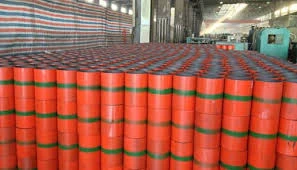- Afrikaans
- Albanian
- Amharic
- Arabic
- Armenian
- Azerbaijani
- Basque
- Belarusian
- Bengali
- Bosnian
- Bulgarian
- Catalan
- Cebuano
- Corsican
- Croatian
- Czech
- Danish
- Dutch
- English
- Esperanto
- Estonian
- Finnish
- French
- Frisian
- Galician
- Georgian
- German
- Greek
- Gujarati
- Haitian Creole
- hausa
- hawaiian
- Hebrew
- Hindi
- Miao
- Hungarian
- Icelandic
- igbo
- Indonesian
- irish
- Italian
- Japanese
- Javanese
- Kannada
- kazakh
- Khmer
- Rwandese
- Korean
- Kurdish
- Kyrgyz
- Lao
- Latin
- Latvian
- Lithuanian
- Luxembourgish
- Macedonian
- Malgashi
- Malay
- Malayalam
- Maltese
- Maori
- Marathi
- Mongolian
- Myanmar
- Nepali
- Norwegian
- Norwegian
- Occitan
- Pashto
- Persian
- Polish
- Portuguese
- Punjabi
- Romanian
- Russian
- Samoan
- Scottish Gaelic
- Serbian
- Sesotho
- Shona
- Sindhi
- Sinhala
- Slovak
- Slovenian
- Somali
- Spanish
- Sundanese
- Swahili
- Swedish
- Tagalog
- Tajik
- Tamil
- Tatar
- Telugu
- Thai
- Turkish
- Turkmen
- Ukrainian
- Urdu
- Uighur
- Uzbek
- Vietnamese
- Welsh
- Bantu
- Yiddish
- Yoruba
- Zulu
casing coupling dimensions
Casing Coupling Dimensions A Comprehensive Overview
In the realm of oil and gas exploration, the integrity of well construction is paramount. One of the critical components of this construction is the casing, which serves as a protective barrier for the wellbore, preventing the collapse of the surrounding geological formations and ensuring the safe extraction of hydrocarbons. An often-overlooked yet vital aspect of casing is the casing coupling dimensions, which play a crucial role in ensuring the efficient connection between casing pipes.
Casing is typically made from steel and comes in various sizes, grades, and lengths. The dimensions of casing couplings are standardized to accommodate the different casing sizes and ensure compatibility. Couplings are short lengths of pipe used to connect two lengths of casing together. It is essential for these couplings to have the correct dimensions to facilitate proper sealing and to withstand the high pressures and stresses encountered during drilling operations.
The American Petroleum Institute (API) has established standards for casing dimensions, including those for couplings. According to API specifications, casing is categorized into various sizes, with well-known designations such as 4.5, 5, 7, 9.625, and larger diameters suitable for different applications. Each casing size has specific coupling dimensions, including outer diameter (OD), inner diameter (ID), wall thickness, and thread type.
Threads are a critical part of casing coupling dimensions, affecting how tightly the pipes can be connected
. API has developed several thread types such as the API round thread, which offers enhanced resistance to stripping and galling, and the buttress thread, preferred for larger diameter pipes where greater strength is needed. Coupling dimensions must align precisely with these thread specifications to ensure a secure connection that can withstand the rigors of high-pressure environments.casing coupling dimensions

Understanding the casing coupling dimensions is essential for engineers and rig operators to avoid complications during the drilling process. Incorrect coupling dimensions can lead to a host of problems, including leaks, casing failures, and compromised well integrity. Therefore, meticulous attention must be paid to the manufacturing and selection of couplings to match the casing specifications.
Moreover, the quality of the material used for couplings is vital. Couplings must be constructed from high-grade steel to provide the necessary strength and durability. Various tests, including tensile strength and impact tests, are conducted to ensure that the couplings can handle the mechanical stresses encountered during drilling operations.
As technology continues to evolve, advancements in casing coupling design and manufacturing processes have emerged. For example, some companies are exploring the use of composite materials for couplings, which could potentially reduce weight while maintaining strength. Innovations such as these highlight the ongoing efforts within the industry to enhance efficiency and safety in well construction.
In addition to standard dimensions, there are also non-standard or premium couplings available for specialized applications. These couplings are engineered to meet specific requirements and are often used in complex well designs, such as those encountered in unconventional resource plays like shale gas or deep-water drilling.
In conclusion, casing coupling dimensions are a crucial consideration in the oil and gas industry. Proper understanding and adherence to these dimensions ensure the structural integrity of wells, safeguard against environmental hazards, and facilitate efficient resource extraction. With the continuous advancements in technology and materials, the future of casing couplings looks promising, paving the way for improved safety and performance in the oil and gas sector. As the demand for energy continues to grow, maintaining high standards in casing and coupling dimensions will remain a priority for industry professionals.
-
Tubing Pup Joints: Essential Components for Oil and Gas OperationsNewsJul.10,2025
-
Pup Joints: Essential Components for Reliable Drilling OperationsNewsJul.10,2025
-
Pipe Couplings: Connecting Your World EfficientlyNewsJul.10,2025
-
Mastering Oilfield Operations with Quality Tubing and CasingNewsJul.10,2025
-
High-Quality Casing Couplings for Every NeedNewsJul.10,2025
-
Boost Your Drilling Efficiency with Premium Crossover Tools & Seating NipplesNewsJul.10,2025







